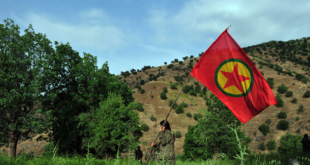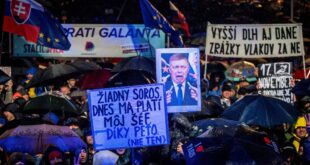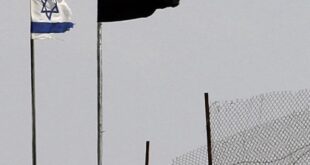Exactly one month has passed since the Ukrainian Armed Forces invaded the Kursk region, and so far the Ukrainian military confidently holds a significant part of the internationally recognized territory of Russia. Despite all the Kremlin’s attempts to silence and downplay the significance of the Kursk operation of the Ukrainian Armed Forces, it has already had a significant impact on the course of the Russian-Ukrainian war and allowed us to draw some interesting conclusions that were not so obvious before. The Insider presents 10 main lessons that can be learned from the Kursk campaign of the Ukrainian Armed Forces.
The war has come to Russia in full swing
In one of the reports from the territories of the Kursk region occupied by Ukrainian troops, local residents confidently answer the question of when the war began – August 6, 2024. Although before that, military actions had already gone beyond the borders of Ukraine – units of the LSR , RDK and other nominally “Russian” formations fighting on the side of the Armed Forces of Ukraine carried out sabotage raids – however, all of them pursued rather propaganda and media goals, were limited in time and resources involved.
In the case of the Kursk region, we are talking about the invasion of a large (according to various estimates , up to 10 thousand people) group of troops. Heavy armored vehicles, barrel and rocket artillery, and aviation are involved in the fighting. According to the latest Ukrainian data, the Ukrainian Armed Forces control 100 settlements on an area of 1,294 km². It is not known for sure how many Russian citizens remain in this territory, but, apparently, we are talking about thousands. A Ukrainian military commandant’s office has been created to ensure law and order and the needs of the population in the occupied areas.
On the one hand, such obvious evidence of the military failure of the Kremlin, unable to protect its own territory from external aggression, objectively undermines faith in the effectiveness of the strategy chosen today, which consists of a “war of attrition” that exhausts Ukraine and its Western allies . On the other hand, after the invasion of Ukrainian troops into the Kursk region, the Chief of the General Staff of the Russian Armed Forces and concurrently the commander of the “SVO” Valery Gerasimov, for almost the first time during the entire war, formulated a goal that was clear and understandable to external observers – to reach the state border.
Foreign invasion can simply be ignored
All the time that Ukrainian troops were developing an offensive in the Kursk region, Vladimir Putin, by personal example, made it clear that events of such scale and significance can simply be ignored.
For the first time since World War II, foreign troops have occupied a significant part of Russian territory. Not since the Second Chechen War have so many people fled their homes due to fighting, and an organized evacuation of this scale has probably not been carried out since 1941. The Ukrainian Armed Forces have taken control of the Sudzha gas metering station, a key infrastructure facility on the last functioning land route for gas transit to Europe.
So what has Vladimir Putin been up to? After the invasion, he visited Baku , inspected pear orchards in Kabardino-Balkaria , stopped by Beslan two weeks before the 20th anniversary of the attack , watched Ramzan Kadyrov’s son Adam shoot in Chechnya, taught a “Conversation about Important Things” lesson in Tuva , and visited Mongolia . The president’s schedule still hasn’t found room for a trip to Kursk.
At the same time, a study by the OpenMinds project showed that after August 6, 2024, the main topic of discussion in the Russian segment of the Internet was the invasion of the Kursk region. The FilterLabs AI project, which analyzes comments on social networks, recorded a sharp increase in negative assessments of Putin’s activities. Even generally loyalist social services: FOM, Levada Center and VTsIOM – noted an increase in anxiety among Russians and a drop in the trust rating of the Russian president.
Despite this, Vladimir Putin consistently called what was happening in the Kursk region a “provocation” ( August 7 ), “circumstances” ( August 8 ), a “counterterrorist situation” ( August 12 ), and simply a “situation” ( August 22 ). At an open lesson on September 2 in a school in Kyzyl, Putin told students about “bandits who got into the Kursk region.” It is noteworthy that the Kremlin did not use the invasion of Russian territory for patriotic mobilization, on the contrary, trying to minimize the significance of what was happening in the information field as much as possible.
Conscripts instead of special forces and strategic reserves
As it turned out, the border cover group in the Kursk region, staffed with conscripts, border guards and Rosgvardiya, is not capable of resisting regular army units. But more or less everyone knew about this in advance, including Vladimir Putin, who in March 2024 ordered the replacement of conscripts on the border with special forces.
It also turned out that the Russian command does not have any significant reserves – not only strategic, but also operational – in case of such events. For now, units from the front, albeit often exotic , and from secondary areas are being transferred to the Kursk region. The Bloomberg agency writes that there are no plans to divert significant forces from Donbass, so Russia has begun preparing public opinion for the mass involvement of conscripts in combat operations on internationally recognized Russian territory. Sending conscripts to the front lines also serves as an alternative to the second wave of mobilization.
In other words, the fact that the Ukrainian Armed Forces are still present in the Kursk region means that the Russian command does not have free human reserves not only to stop unexpected crises, but also, probably, to provide planned support for the current offensive in Ukraine. The demonstrated limitations of the Kremlin’s resources put it in a completely different position from the point of view of military-diplomatic settlement: long-term support for Ukraine is no longer a doomed matter, as it seemed to be in the minds of many politicians in the West just a month ago.
Positional warfare is not everywhere
After the unsuccessful Ukrainian counteroffensive in the summer of 2023 and the transition to a full-fledged positional war along almost the entire length of the front, the opinion took root (which The Insider also adhered to ) that large-scale maneuverable offensive operations cannot be carried out suddenly. With the invasion of the Kursk region, the Armed Forces of Ukraine proved that both covert accumulation of forces, operational surprise, and rapid breakthroughs are quite achievable and that positional stalemate and complete transparency of the battlefield do not reign everywhere.
At the same time, the Ukrainian Armed Forces’ operation in the Kursk region confirms the lack of their resources for a full-fledged offensive against a prepared defense. The limited combat zone indicates the critical dependence of the Ukrainian group on the capabilities of army logistics.
The Elusive and All-Stopping Kadyrovites
According to some reports, after the first strikes by the Ukrainian Armed Forces, Kadyrov’s men stationed in the Kursk region “dispersed” , that is, fled. According to other reports , the Chechen servicemen “f*cked off immediately”, leaving conscripts to cover the border. In connection with this, Ukrainian channels have been posting now-legendary videos from Chechen “TikTok troops” ( 1 , 2 ) with mocking comments about the approach of “Akhmat” fighters to defend the region.
The commander of the Akhmat special forces, Apti Alaudinov, first said that the Chechen units that were defending the border in the Kursk region were unable to repel the attack of the Ukrainian Armed Forces because they simply “missed” the Ukrainian military. If we are to believe his words, they passed by the Chechen strongholds without engaging in combat. Later, Alaudinov said that conscripts and their parents who do not want to defend their homeland should ask themselves: why does this country need them? At the same time, a month before the Kursk offensive of the Ukrainian Armed Forces, “war correspondent” Vladimir Romanov had to apologize to the “Akhmatites” precisely for saying that conscripts were stationed on the border, and Chechen soldiers were located behind them.
From the first day of the invasion in Kursk region, Alaudinov has acted as almost the main public representative of the Russian military, reporting on successes in the fight against the enemy almost daily. In particular, he stated:
August 6 – “let’s grab some popcorn and calmly watch as our guys destroy the enemy”
August 8 – “the situation is not critical”
August 10 – “We have maximum control over the situation”
August 11 – “the situation is gradually stabilizing”
August 13 – “the situation is under control”
August 14 – “We have completed blocking the enemy”
August 18 – “the enemy is stopped”
August 21 – “We stopped them and started pushing them back”
All this time, the Ukrainian Armed Forces occupied more and more settlements on Russian territory.
Ukraine is not a puppet of the West
One of the favorite themes of Russian propaganda is the complete lack of independence of the “Kyiv regime.” Volodymyr Zelensky is presented as a puppet of Washington and Brussels, the Ukrainian political elite is an obedient executor of the will of the “collective West,” and the Ukrainian Armed Forces command is a structure subordinate to NATO and the US Army.
In the case of the operation in the Kursk region , it turned out that America knew nothing about the preparations for the invasion, and Syrsky had to hide his plans and prepare the operation in conditions of the strictest secrecy so that the Western allies would not disrupt it.
The West No Longer Fears Escalation
The direct invasion of Russian territory was the most abrupt escalation in the Russian-Ukrainian war. According to The Washington Post, the US is now seriously considering using Western long-range weapons against Russia, given that the Kremlin’s reaction has been so restrained. In any case, the columns of foreign armored vehicles and tanks briskly cutting through the Kursk region have not had any serious consequences. Some commentators are trying to present massive missile strikes on Ukraine as a response to the invasion, but this is just the latest stage in a months-long campaign against the country’s energy infrastructure. Military experts Michael Kofman and Rob Lee also write about the undermining of the concept of red lines in an article for Foreign Affairs.
The Ukrainian invasion also calls into question the concept of nuclear deterrence, since in our case a non-nuclear power committed armed aggression against a nuclear one, seized its territory, and did not face inevitable retaliation. If we recall that during the Falklands War of 1982, Britain also chose to clear the disputed islands of Argentine troops with conventional weapons, then the prospect of using nuclear weapons in response to an invasion becomes even less obvious.
Peace not at any cost
It turned out that many experts and politicians who promoted the idea of peace on the current line of contact are not ready to leave Russian territories under Ukraine’s control. In turn, Volodymyr Zelensky said in an interview with NBC that he plans to hold Russian territories until Putin sits down at the negotiating table.
Vladimir Putin initially stated that the invasion of the Kursk region made peace negotiations impossible:
“It appears that the enemy is seeking to improve its negotiating position in the future. But what kind of negotiations can we even talk about with people who indiscriminately strike civilians, civilian infrastructure, or try to create threats to nuclear power facilities? What can we even talk about with them?”
Acting Permanent Representative of Russia to the UN Dmitry Polyansky even assessed the events in the Kursk region as Kiev’s negative response to the “generous offer” of peace talks. Let us recall that Putin’s “generous offer” consisted of a demand to withdraw Ukrainian troops from the Kherson, Zaporizhia, Donetsk and Luhansk regions, oblige Ukraine not to join NATO and maintain neutral status, and also lift all sanctions against Russia.
However, Putin later essentially admitted that he considers the “failure of the provocation” in the Kursk region a precondition for the peace process. Entering into negotiations, taking into account the current achievements of the Ukrainian Armed Forces in the Kursk direction, is one of the most understandable ways to translate tactical military success into a political result.
Saving civilians is the work of the civilians themselves
In the first days of the Ukrainian Armed Forces operation in Kursk Oblast, local authorities and security forces vehemently denied that the border had been breached at all. The Russian Defense Ministry managed to report on the “defeat” of a Ukrainian sabotage and reconnaissance group that retreated back to Ukraine, and later repeatedly reported ( 1 , 2 ) on the “stopping of the enemy’s advance.” Residents of border areas did not notice the organized evacuation and left on their own, at their own risk.
In total, 130,000 people left the border areas of the Kursk region. However, the authorities not only did not engage in evacuation, but also largely shifted assistance to refugees to volunteers and charitable NGOs. Volunteers are also largely responsible for providing medical assistance to civilians and military personnel injured in combat. Moreover, Russians are offered to directly help victims using Ozon and Avito certificates.
“Territorial uncertainty” is not an obstacle to elections
After the Ukrainian Armed Forces invaded Kursk Oblast and lost control over approximately 1,300 km² of the region’s territory, the Russian bureaucratic machine gave birth to an unexpected neologism to describe this situation: “territorial uncertainty.” Just as “clap” replaces “explosion,” “smoke” is used instead of “fire,” and “negative growth” instead of “fall,” the proposed phrase allows one to avoid saying something like “Ukrainian occupation.”
Despite the “territorial uncertainty,” the Kursk region did not cancel the gubernatorial elections, although they did postpone voting at the municipal level in several districts.
 Eurasia Press & News
Eurasia Press & News




